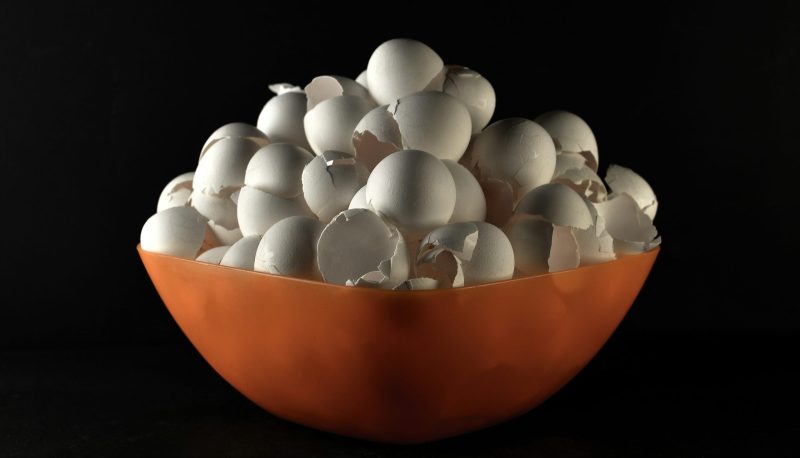New information from the eggshell membrane in chicken eggs would benefit surgery and egg producers.
This article was written by McGill University and originally published by Futurity.
Athletes often suffer injuries to ligaments in their knees, particularly to the anterior cruciate ligament, or ACL. While surgery to replace these torn ligaments is becoming increasingly common around the world, it often needs to be repeated. That’s because it has proved challenging to anchor fibrous, soft, and wet ligament grafting material into hard bone.
“WHAT WE FOUND ABOUT THIS SOFT-HARD INTERFACE IS QUITE REMARKABLE.”
Their findings also have the potential to reduce losses for commercial egg and poultry producers.
The researchers discovered how the hard shell of a bird egg attaches to the underlying wet fibrous membrane of the egg (the thin membranous layer found inside the shell seen when peeling a hard-boiled egg). By using advanced 3D imaging X-ray and electron microscopes together with cryo-preservation methods the research team were able to peer into this interface in three dimensions to visualize and quantify the interlocking phenomenon.
“Until now, no one had considered how this interface between these two very dissimilar substances, one a hard biorock, and the other a soft fibrous membrane, might be secured at the nanoscale,” says Marc McKee, a professor in the Faculty of Dental Medicine and Oral Health Sciences, and in the anatomy and cell biology department at McGill University, and the principal investigator of the study conducted by doctoral student Daniel Buss. “What we found about this soft-hard interface is quite remarkable.”
The researchers discovered that, at a certain stage in the development of an egg prior to laying, the shell sends mineral nanospikes into the soft and compliant surface fibers of the underlying eggshell membrane. This membrane surrounds the soft contents of the egg interior, being either the egg white and yolk from table eggs, or the developing chick embryo in a fertilized and incubated egg.
This nanospiking attachment process between two highly dissimilar materials substantially increases the surface area of the interface between the soft and wet organic fibers and the hard and largely dry inorganic mineral. Such an attachment importantly anchors and secures this soft-hard interface to prevent slipping and sliding of the fibers within the shell.
Otherwise, detachment of the membrane from the shell can be lethal for the embryonic chick, can weaken the shell, and/or can allow the invasion of pathogens (such as salmonella) into the interior contents of the egg. Food safety of the table egg relies on an intact shell that is well-integrated with its underlying membrane.
With this new understanding of the shell-membrane interface as being a characteristic feature of strong, safe, and healthy eggs, losses for table egg producers and poultry breeders might be reduced through the establishment of commercial genetic breeding programs that maintain or maximize this interfacial structure.
The findings might also potentially lead to new engineered, hybrid composite material designs, and to new procedures to improve the outcomes of various medical and dental reconstructive surgeries, both of which may require attaching soft wet fibers to hard materials.
The study appears in iScience.
Source: McGill University





